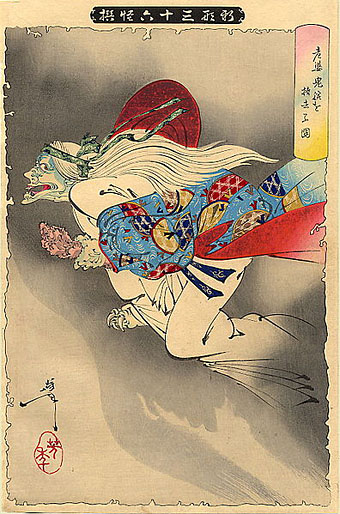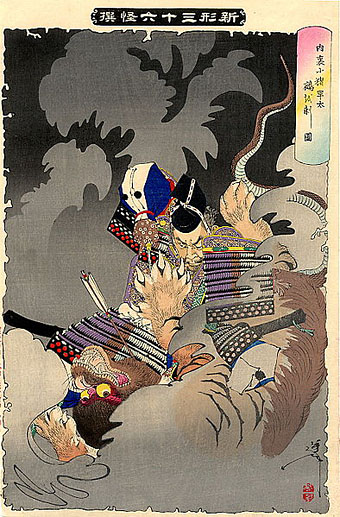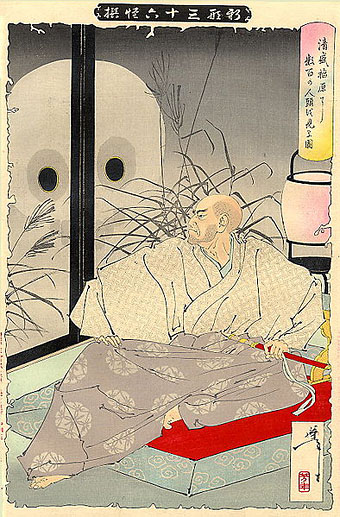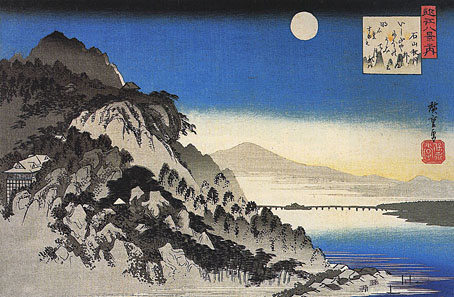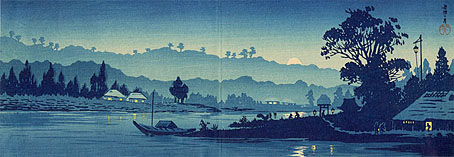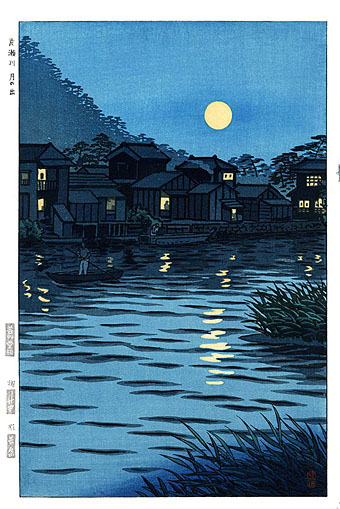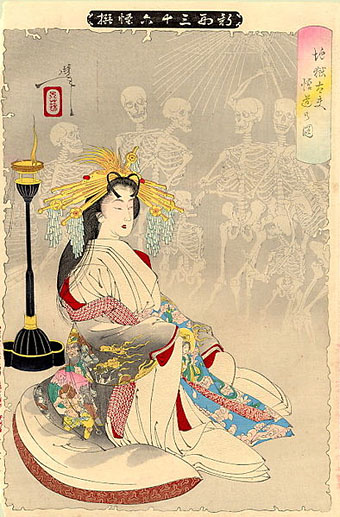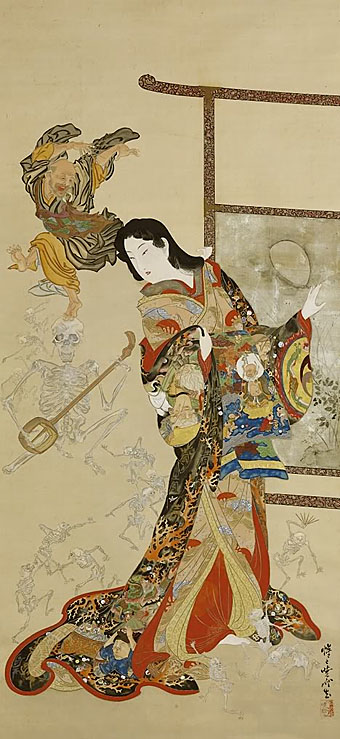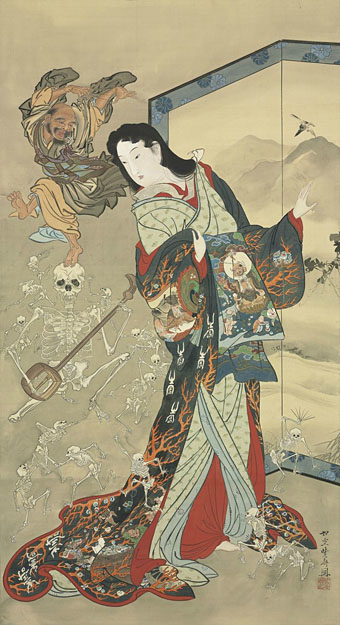
Abalone Fishergirl with an Octopus (c. 1773-1774) by Katsukawa Shunsho.
Cephalopods in Japanese prints. There are many more octopuses than squids, especially the marauding variety, and that’s before you get to the erotic encounters like Hokusai’s notorious shunga dream.

The Dream of the Fisherman’s Wife (1814) by Katsushika Hokusai.

Seven Divers and a Big Octopus (c. 1830–40s) by Utagawa Kunisada.

Ario-maru Struggling with a Giant Octopus (1833–1835) by Utagawa Kuniyoshi.

Popular Octopus Games (1840–1842) by Utagawa Kuniyoshi.

